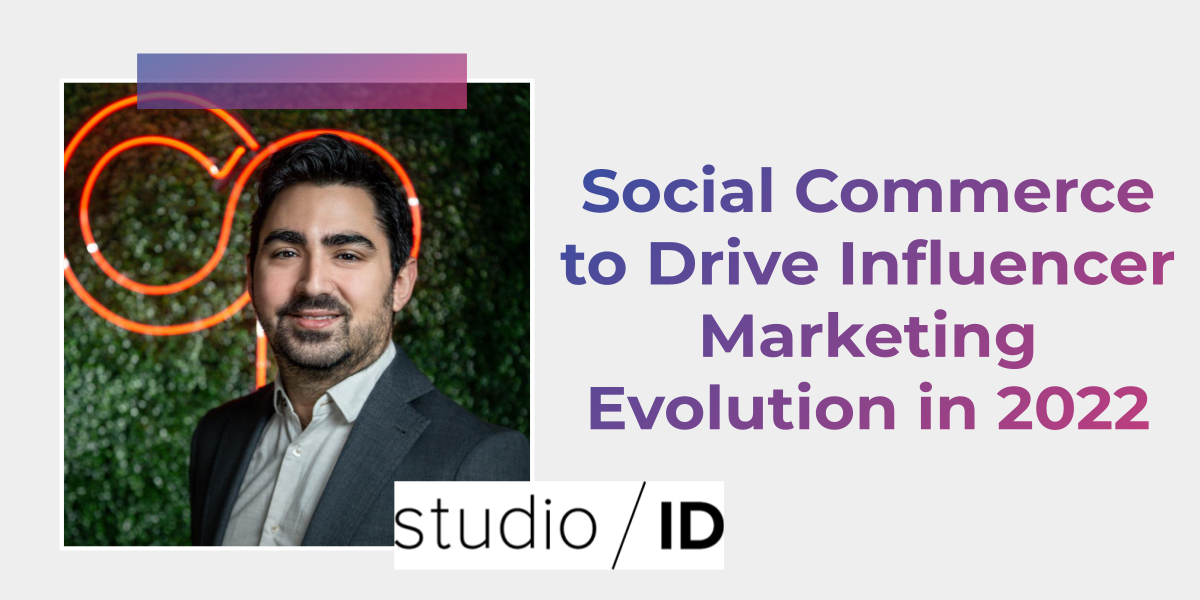Original Article: studioID
The e-commerce market has grown more crowded as established brands and digitally native startups seek to engage shoppers who are spending more time online. As social media platforms double down on tools for enabling in-app purchasing, marketers next year are likely to take a closer look at striking deals with influencers who have dedicated followers as a way to stand out from rivals while driving sales.
“The social platforms are allowing for purchases to happen within their apps, and creators are now able to tag products directly. That opens the door for marketing to be more ‘bottom-funnel’ for a lot of advertisers,” Eric Dahan, co-founder and chief executive of influencer agency Open Influence, said in a phone interview.
This transition comes as spending on influencer marketing grows. It expanded this year by 42% to $13.8 billion worldwide and is forecast to notch $15 billion by the end of 2022, according to a year-end report by influencer platform Collabstr.
Social commerce sales in the U.S. are also growing, but are likely to remain a small percentage of the overall e-commerce marketplace, eMarketer forecasts. U.S. social commerce sales are expected to total close to $37 billion this year, up 35.8%. By 2025, the total is predicted to hover around $80 billion. However, social commerce will account for just 4% of the U.S. e-commerce market in 2021 and 5% by 2024.
A Collaborative Environment
The expected increase in collaborations between influencers and brands will come as the technology ecosystem makes it easier than ever to set up an online store. E-commerce software maker Shopify said the number of merchants that use its platform reached 1.75 million last year — more than double from two years earlier — amid the pandemic-related surge in online shopping. With social media platforms like Facebook and TikTok adding direct-sales tools for creators and advertisers, traditional online retailers will face steeper competition.
In this environment, collaborating with a social influencer is one way for brands to reach target consumers who pay attention to specialized content and may be ready to shop. That creative work can include everything from dance videos on TikTok to travel destinations on Instagram to product recommendations on YouTube. Viewers can buy what they see in pictures and videos without leaving the app, helping to remove some of the friction at checkout. The transactions help marketers to attribute outcomes in the lower part of the purchase funnel to the content, a difference from the brand-building influencer campaigns of the past.
“Historically, influencer marketing had been very awareness-driven — paying a bunch of influencers to post to build my brand,” Dahan said. “Brands weren’t really focused on conversions because the attribution was a little bit trickier. And now with social commerce and things like live shopping, that’s really going to transform influencer marketing.”
Attribution data will be valuable for brands and influencers as they seek to form longer-term marketing partnerships.
Monetizing Influencer Content
Social commerce not only will open more opportunities for brands to make direct sales, but it also will affect how influencers make money. In addition to revenue-sharing arrangements with platforms like YouTube or affiliate deals with online marketplaces like Amazon, other monetization methods are emerging.
“With the birth of the creator economy, the focus was on revenue that came from advertising,” Dahan said. “In the past 18 months or so, we’ve seen a pretty big transformation where the creator economy has grown substantially as creators have more ways to monetize than ever.”
Creators can charge subscriptions or other fees for premium content, build their own brands and develop intellectual properties that are a source of licensing revenue. Marketers can participate in these efforts by collaborating with creators to co-brand products or by becoming official sponsors of content.
In these ways, many brands are forming longer-term relationships with influencers instead of hiring groups of them for individual campaigns and projects. Dahan said he expects to see more of these kinds of deals between brands and influencers in 2022 and beyond.
“The ways you can work with a creator are fragmenting,” Dahan said. “Not only do we have more platforms and more creative niches, but also within the platforms themselves, there’s so many more features to be leveraged.”
Brands can develop a variety of influencer marketing strategies, including a multi-tiered approach to working with a range of big-name influencers and microinfluencers. Those lesser-known personalities can be powerful allies to brands with their authenticity and dedicated followers.
“Those smaller influencers tend to convert better. They tend to be more focused and do a better job at communicating,” Dahan said. “They also tend to get fewer brand deals than some of the bigger influencers. So, when they get a brand deal, they’re typically creating better content for their audience or are more engaged in the process.”






